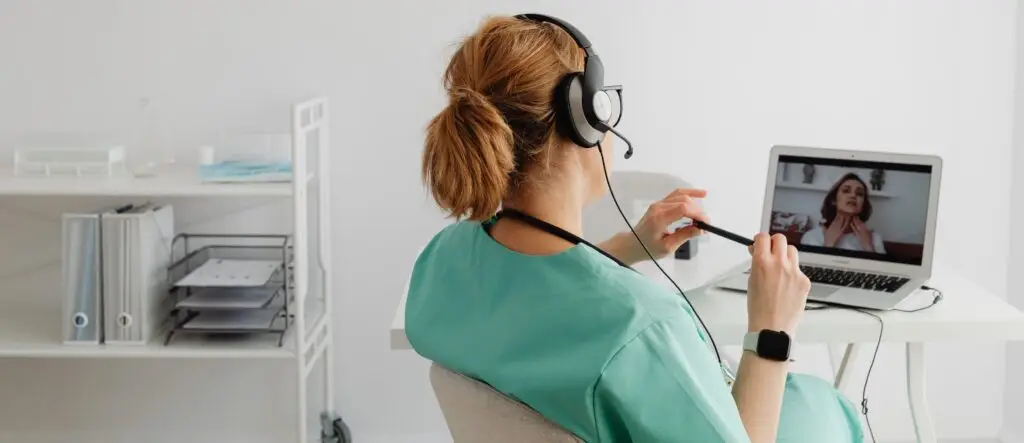Is technology the key to improving speech therapy outcomes? As a speech language pathologist, I’ve seen firsthand the transformative impact that modern technology has had on my clients’ communication abilities. In today’s world, where technology is constantly advancing and evolving, it’s no surprise that this has extended into the field of speech pathology. From apps to advanced devices, there are now numerous tools available to enhance traditional therapy methods and improve overall results.
In this article, we’ll delve into the game-changing role of speech pathology technology in modern therapy. We’ll discuss how these advancements have revolutionized the way we approach treatment plans for individuals with speech and language disorders. Whether you’re a professional working in this field or someone seeking guidance for yourself or a loved one, understanding how technology can enhance our ability to communicate is crucial. So let’s explore together as we discover how these tools are shaping the future of speech therapy!
So, speech pathology technology?
Speech pathology, also known as speech therapy, is a specialized field that focuses on helping individuals with communication and swallowing disorders. Over the years, technology has played a significant role in improving the effectiveness and efficiency of speech therapy. With advancements in technology, speech pathologists now have access to innovative tools and techniques that have revolutionized the way they provide therapy.
One of the most game-changing roles of technology in modern speech pathology is its ability to enhance assessment methods. In traditional therapy sessions, assessments were often done manually using standardized tests or observation-based methods. However, with the help of advanced software programs and devices such as video recording equipment and voice analysis systems, therapists can now gather more accurate data about their clients’ communication abilities. This allows for a more personalized treatment plan tailored to each individual’s specific needs.
Technology has also greatly improved accessibility to speech therapy services. With teletherapy becoming increasingly popular, individuals who may not have had access to quality speech therapy due to geographical limitations or mobility issues can now receive treatment from the comfort of their own homes through online platforms. This has opened up opportunities for people living in remote areas or those with disabilities to receive timely intervention without having to travel long distances.
Furthermore, technology has made it possible for therapists to engage their clients in interactive activities using various apps and games designed specifically for language development and articulation practice. These tools make learning fun and engaging while still targeting specific goals set by the therapist.
Another important aspect where technology has been beneficial in modern speech pathology is data tracking. By utilizing electronic records rather than paper-based files, therapists can easily track progress over time and make necessary adjustments to treatment plans accordingly.
In conclusion, there is no denying that technology has significantly impacted modern speech pathology practices positively. It continues to play an essential role in enhancing assessment methods, increasing accessibility to services, providing engaging activities for clients during therapy sessions,and facilitating efficient data tracking – all ultimately leading towards better outcomes for individuals with communication and swallowing disorders. As technology continues to advance, we can expect even more groundbreaking developments in the field of speech pathology, making a significant difference in the lives of those who need it most.
Exploring the Different Types of Speech Pathology Technology Available Today
In the world of speech pathology, technology has become a vital ally for both therapists and clients. Various tools are now available to aid in communication development, making sessions more engaging and effective. For instance, computer software designed specifically for speech therapy offers interactive games that help individuals practice their speaking skills in a fun way. These programs often include visual aids like charts and videos that enhance understanding while keeping users interested. Additionally, speech-generating devices (SGDs) have transformed how those with speech difficulties communicate. These devices allow users to select pictures or text on a screen to create spoken words, bridging the gap between thought and expression.
Moreover, mobile applications have emerged as convenient solutions to support ongoing practice outside of clinical settings. Many apps provide customizable exercises targeting specific phonetic sounds or language concepts suitable for various age groups.
For example:
- Auditory processing training tools
- Language learning platforms
- Simplified social interaction planners
By harnessing these innovative resources, therapy becomes not only more accessible but also enjoyable for patients of all ages. As technology continues to evolve, it promises even greater advancements in improving communication abilities across diverse populations.
The Role and Benefits of Mobile Apps in Speech Therapy
Mobile apps have transformed the landscape of speech therapy, offering a unique blend of accessibility and engagement for both therapists and patients. With just a smartphone or tablet, individuals can access a wealth of resources tailored to their specific needs. For example, interactive games and exercises help children practice pronunciation in an enjoyable way. The visual aids often included in these applications make it easier to understand complex concepts, while audio features allow users to hear correct pronunciations repeatedly. This multimedia approach keeps sessions fresh and motivating, encouraging users to participate more actively.
Moreover, mobile apps bridge gaps for those who may not have easy access to traditional therapy settings. They offer flexibility in scheduling; users can practice anytime and anywhere—whether it’s during a car ride or at home on the couch. Additionally, many apps track progress over time through built-in analytics that provide feedback on improvement areas. This quantifiable data is invaluable for therapists as they tailor individualized treatment plans based on real-time insights from app usage. In essence, mobile applications not only enrich the therapeutic process but also empower clients by making learning fun and accessible.
Overall, their role continues to grow as technology advances within the field of speech-language pathology.
Read also: assistive technology for speech impairment

How Advanced Devices are Revolutionizing Treatment Approaches in Speech Pathology
In recent years, technology has dramatically transformed the way speech pathologists approach treatment. Advanced devices such as voice recognition software and portable speech analysis tools are making therapy more engaging and effective. These cutting-edge tools offer real-time feedback, allowing both therapists and patients to monitor progress with precision. For instance, a child struggling with articulation can use an app that provides visual cues when pronouncing sounds incorrectly. This interactive method often leads to faster improvement because it captures their attention while giving them immediate guidance on how to produce sounds correctly.
Moreover, teletherapy platforms have opened doors for many individuals who previously faced barriers in accessing care due to distance or mobility challenges. With just a computer or tablet, clients can connect with professionals from anywhere in the world, receiving personalized support tailored to their unique needs. The ability to share screens means that therapists can utilize multimedia resources like videos or interactive games during sessions—all designed specifically for language development and fluency practice.
By blending traditional techniques with modern technology, speech pathologists are not only enhancing treatment effectiveness but also fostering a sense of empowerment among their clients by making learning enjoyable and accessible.
Speech Pathology Technology: A Look to the Future and its Impact on Communication Abilities
The world of speech pathology is evolving rapidly, driven by advancements in technology. Tools such as apps and software designed for speech therapy are becoming increasingly popular among clinicians and patients alike. These digital resources not only provide interactive ways to practice communication skills but also offer personalized feedback that can help track progress over time. For instance, programs may include engaging games that motivate children to articulate sounds correctly or use language in context, making therapy feel less like a chore and more like play. This blend of fun and learning encourages users to participate actively, which can lead to better outcomes.
Looking ahead, the integration of artificial intelligence (AI) into speech pathology holds immense potential. Imagine chatbots that mimic conversations with natural pauses or even virtual reality environments where clients can practice real-life scenarios without the pressures of public speaking. Such innovations could significantly enhance therapy sessions by creating immersive experiences tailored to individual needs.
As we explore these new horizons—from teletherapy options allowing remote access to cutting-edge voice recognition systems—it’s clear that technology will reshape how people improve their communication abilities, offering hope for countless individuals striving to overcome challenges in expressing themselves effectively.
You may also like: dragon speech recognition software download
Embracing Technological Advances to Maximize Therapy Outcomes in Speech Pathology
In today’s fast-paced world, technology offers exciting tools that can greatly enhance therapy outcomes in speech pathology. Imagine a room filled with vibrant colors and interactive screens designed specifically for communication therapy. With resources like apps and software, therapists can now create engaging exercises that motivate clients to practice their skills more frequently. These digital platforms often include gamified elements, which transform traditional tasks into fun challenges. For example, a simple vocabulary-building game on a tablet might encourage children to participate eagerly, making them forget they are actually working hard to improve their speech.
Moreover, technology enables better tracking of progress over time. Therapists can use applications that record sessions or analyze data from assessments instantly. This means adjustments can be made quickly based on what works best for each individual client. With the ability to share these insights with families through secure portals, caregivers become active partners in the journey toward improvement.
Research also shows that teletherapy has opened up access for those who may not have been able to attend regular sessions due to distance or mobility issues. By leveraging these technological advances effectively, speech pathologists are creating an inclusive environment where everyone has the chance to thrive and communicate confidently.



